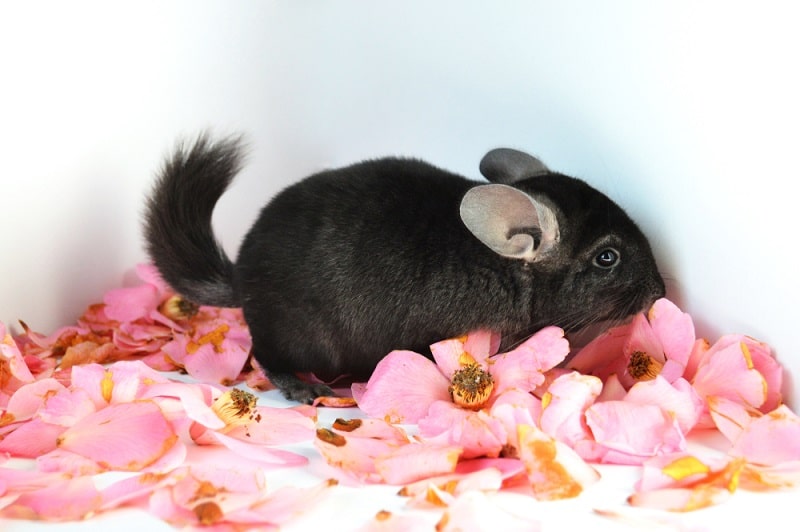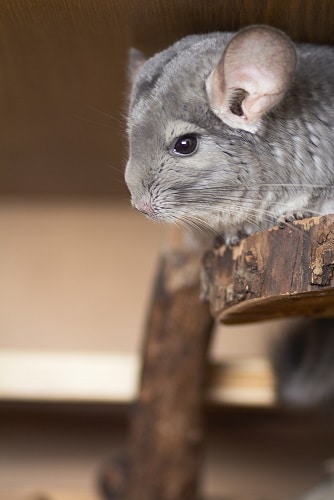
Quality Of Life And Euthanasia
“Permissible methods of euthanasia include pentobarbital sodium overdose, carbon dioxide inhalation, and exsanguination under anesthesia.” Quote by Arizona State University, from an archived article.
The following article contains the compassionate wisdom of three people with considerable individual experience in the management of long term health conditions in chinchillas, as well as euthanasia: Barbara of Cheeky Chinchillas, Jane of R&J Chinchilla Rescue, and Lori of Bama Chins. For these people, who have in some instances handfed chins several times daily for years in the course of managing their situation while the quality of life was still present, euthanasia is always the very last resort, and the decision to stop pursuing treatment options and euthanize is always made with the sole consideration of what is best for the chin. Also bear in mind that some conditions that have been regarded as “hopeless” in the past, like malocclusion, maybe more treatable today than before; keeping informed of new developments and working closely with your exotics specialist vet can be literally life-saving.
Barbara:
When a chinchilla has been ill, has undergone surgery or has had dental issues, he may for a while need extra special care and if he is unwilling to eat, he will need to be hand fed, as it is vital to keep the gut stimulated. Hopefully, after hand feeding for a few days/weeks, he will pick up and start eating again on his own.
When and how do we know if they have some quality of life? Primarily, you will have discussed this with your vet and hopefully, he or she will have given you some good advice and guidelines. Also, use common sense, as you know your chinchillas’ behaviour patterns as to what is ‘normal’.
If they do not start eating on their own after some time, what do we do? Do we continue to hand feed? The answer is definitely yes, if they still have a quality of life.
From my own experience, when a chinchilla can’t or won’t eat on his own, but willingly takes food via a spoon or syringe, is putting on weight and still wants to come out to play, then I would say he still has a quality of life.
However, if after a while, your chinchilla is not willingly taking food, he may well be suffering. How do we know if they are in suffering or in pain? If he is losing weight and you are literally forcing food down, he just sits around all the time, doesn’t want to come out and he shows no interest in anything, then his quality of life is poor.
If he has deteriorated so much that you are forcing very small amounts of food into him, you might be keeping him ‘just alive’. In this case, it would be kinder to have your pet put to sleep.
I think we should always remember that we keep our pets alive for their sake and not for ours.
Jane:
What is Quality of Life and how and when do we make the decision to euthanize a chinchilla?
A very difficult question to answer, but one that someone somewhere is facing right at this moment!
The decision made must be with the chinchilla’s best interests first and foremost. As long as they are free from pain, enjoying their surroundings, maintaining their weight, do not require force-feeding, and showing interest in life, then, in our opinion, they deserve that chance to live.
Every situation is different though, and judgement must be made on the individual chinchilla. If your chin has to undergo surgery every few weeks, you need to ask yourself if it’s in the chinchilla’s best interests to put him through this, or would it be kinder to have the chin put to sleep to save his suffering.
Remember, they only have one life and they all deserve a chance to live that life.
To understand a chinchilla’s quality of life, you need to understand chinchillas. When the time comes that they don’t appear to be bright and active when they’re not showing interest in their surroundings, or have lost that ‘spark,’ then perhaps the time has come for you to say your goodbyes.
Lori:
With our chinchillas, quality of life decisions have come up in three different situations:
1. A chinchilla develops an acute, sudden onset medical condition.
This is a frantic time, rushing back and forth to the vet, trying medications, hand feeding as needed, doing everything I can possibly think to help. Time is very much of the essence. Trying every course of treatment usually takes around 5-7 days in this type of situation. When the sick chin finally refuses water (offered by syringe), then I know that I am most likely going to lose them. If they are not in pain, I keep them with me, and usually they pass away that day. If there is any discomfort, we go to the vet. This may seem strange, but ever since Dove made a somewhat miraculous recovery from her first round of kidney problems, I’ve been very reluctant to euthanize. Even though I think I know instinctively that a chin won’t make it – I still remind myself it ain’t over til the fat lady sings. I still hope for miracles.
2. A chin shows symptoms of a chronic, long term illness – such as epilepsy or malocclusion, which will require indefinite care.
Keeping in mind that every chinchilla’s illness is different, and one can’t generalize, my experience has been that it’s possible to maintain a good quality of life in this type of situation. The success of this depends upon finding an effective treatment plan and also your level of commitment. You must be sure that you can give medications and feedings consistently, while realizing that a long term treatment plan means you’ll be staying close to home indefinitely. But if you can keep your chin fed, comfortable and interested in life, then it’s truly worth it.
With long term illnesses, I’ve found it’s especially important to have a good rapport with my vet. When caring for Cody, my epileptic chin, I conferred with him often for both treatment plan decisions and occasional moral support. My vet’s advice on whether I was doing the right thing for Cody has served as my barometer for quality of life for a chin ever since. He would say, “Is he eating? Is he playing? Is he comfortable? If he is – then you’re doing the right thing.” It’s deceptively simple.
Malocclusion is very tricky. I’ve been hand feeding Amos for geez, probably 5 years. We’ve tried everything, surgeries and constant filings, but nothing has worked. But he’s a very happy, chunky boy that comes down to play with me each night when I clean his cage. He is a delight. But a lot of chins present with dental problems that are far more serious and painful and may need to be put to sleep. I think in these cases, x-rays and a chin’s level of discomfort will determine the course of action.
3. A senior chin (in their teens) shows any sign of serious illness, whether it looks like it’s going to require long or short term treatment.
I think the age issue is really important. When one of our senior chins gets sick, we take a much harder look at the length and type of treatment needed and weigh that against the treatment’s chance of success and the chinchilla’s comfort level. With a senior chin, we don’t usually pursue aggressive medical treatment. Surgery often isn’t an option, and few of my chins can handle anything stronger than Sulfa Trimethaprim for antibiotics. I’ve only had two situations with seniors like this and in both of them, we kept a close eye on how the chin was feeling. If it became apparent that the chin was in pain or uncomfortable, and there was no way we could help, then we would have them put to sleep.

